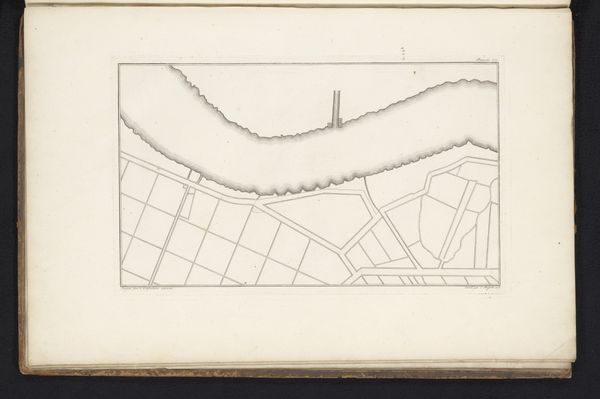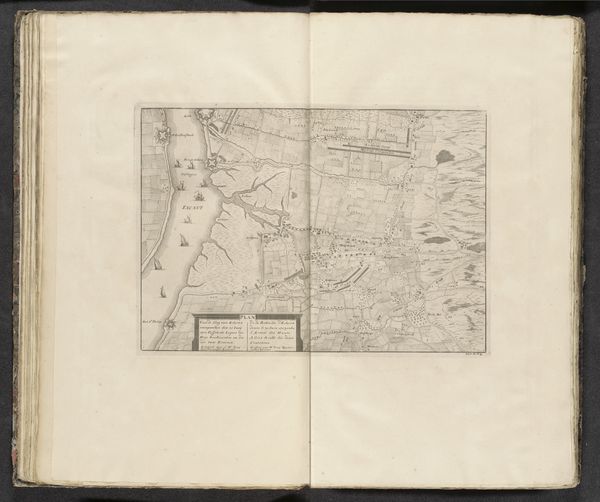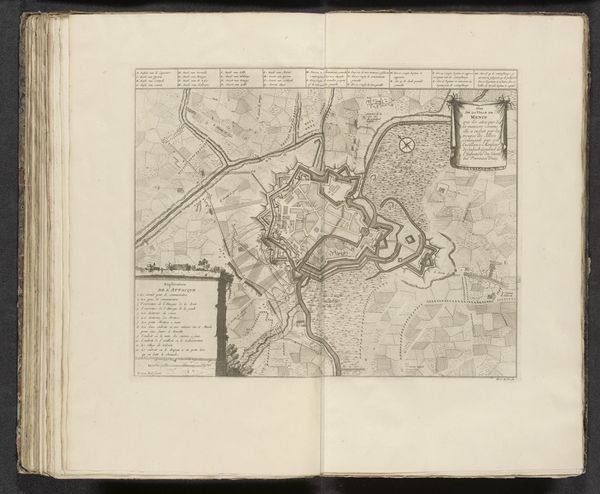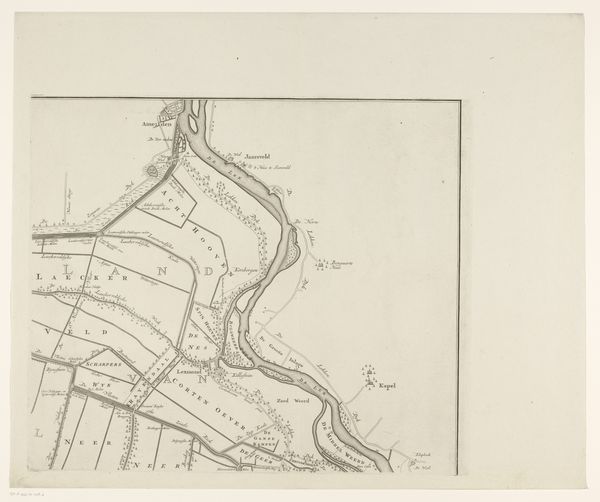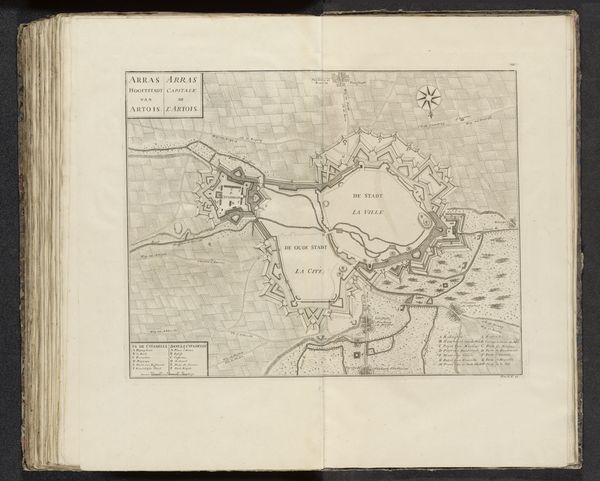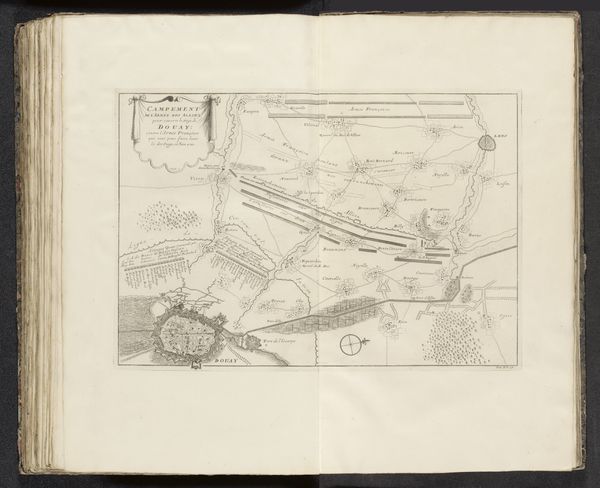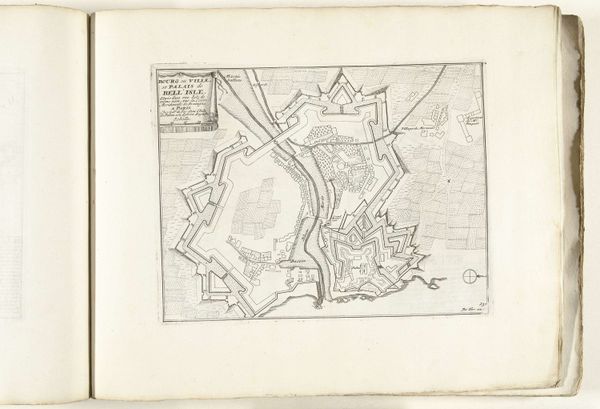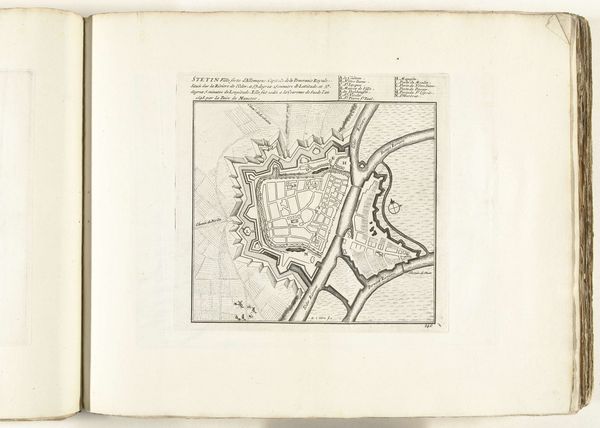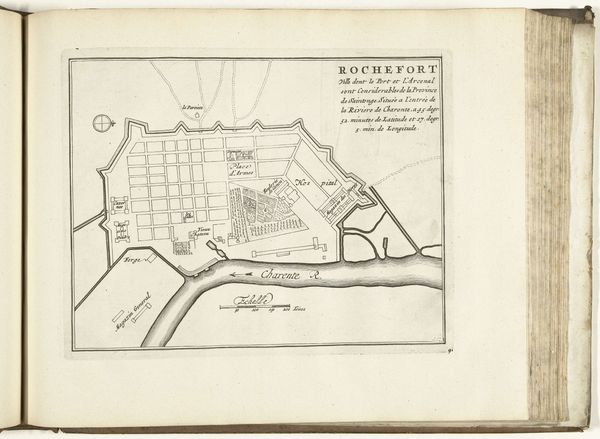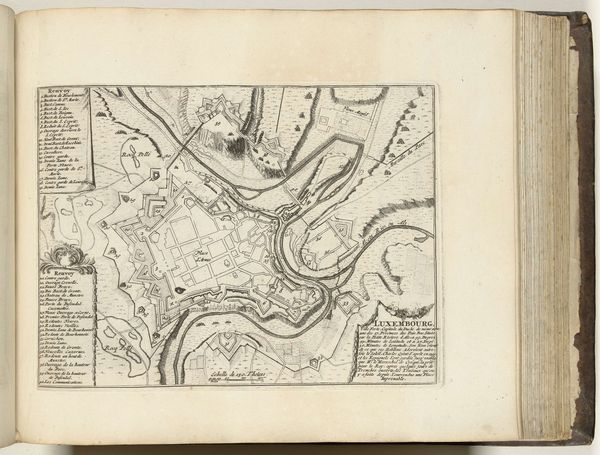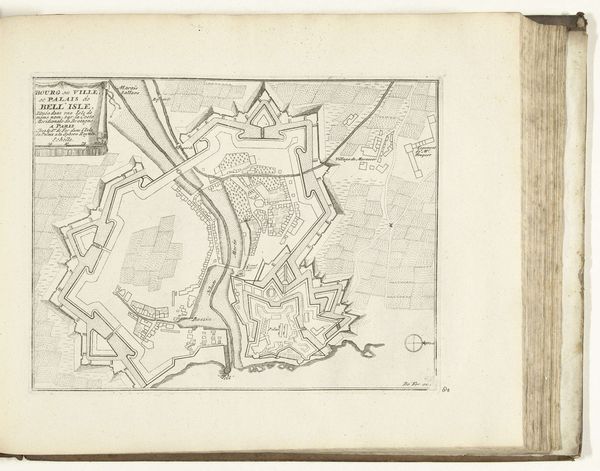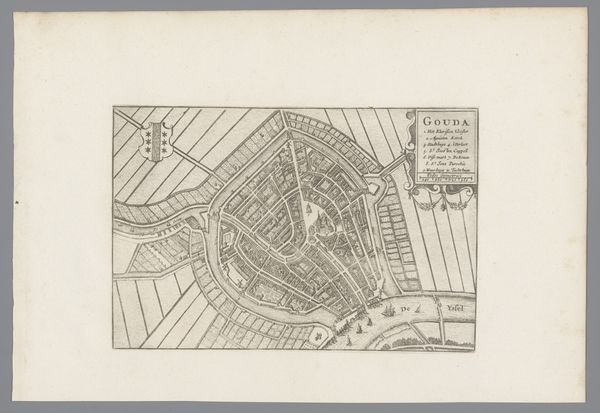
print, etching, paper, engraving
#
baroque
# print
#
etching
#
paper
#
history-painting
#
engraving
Dimensions: height 342 mm, width 450 mm
Copyright: Rijks Museum: Open Domain
Curator: Here, we have an etching and engraving on paper, made sometime between 1712 and 1729, entitled "Kaart van de legerkamp van de Geallieerden bij Denain, 1712," which translates to "Map of the Allied Army Camp at Denain, 1712." It is currently held at the Rijksmuseum. Editor: This piece strikes me as incredibly meticulous, yet cold. The stark lines, the organized rendering of space...it lacks any sense of warmth or humanity. Curator: I agree; there is a geometrical rigor to its composition. The precision speaks to the values of the Baroque period: order and clarity above all. Look at the careful delineation of the fortifications, the rendering of perspective, the placement of the legend. Everything serves to create an image of reasoned control. Editor: And control is certainly what they aimed for! Just imagine the effort behind creating this level of detail. Etching and engraving involved highly skilled artisans transferring information onto metal plates with precision tools, and then producing multiple impressions. It underscores the collaborative nature of early cartography; many hands involved, from surveyors to printmakers. This was a physical endeavor. Curator: Indeed. Consider how the print medium affects the viewer's relationship with the depicted territory. This image does not intend to represent nature as such; instead, it is all about command. It provides strategic information that only select people would have access to. Editor: I see that as well. You start thinking about who gets to see the map, who interprets the map and you realize it wasn't created for aesthetic pleasure. But what narratives are literally etched and impressed in the paper? The battles fought? Curator: Precisely. But beyond mere depiction, it is more about abstraction—a play of lines and symbolic marks which come together as a legible space with power structures inscribed. The paper itself supports those meanings as a rigid, strong object meant to last. Editor: Considering this map now, with a focus on process, material and social context brings it to life, almost like digging into historical soil itself. It definitely adds more to how I initially viewed the art. Curator: And for me, reflecting on its structural organization confirms it stands not simply as a practical tool, but as a testament to the baroque aspiration to mastery through form.
Comments
No comments
Be the first to comment and join the conversation on the ultimate creative platform.
